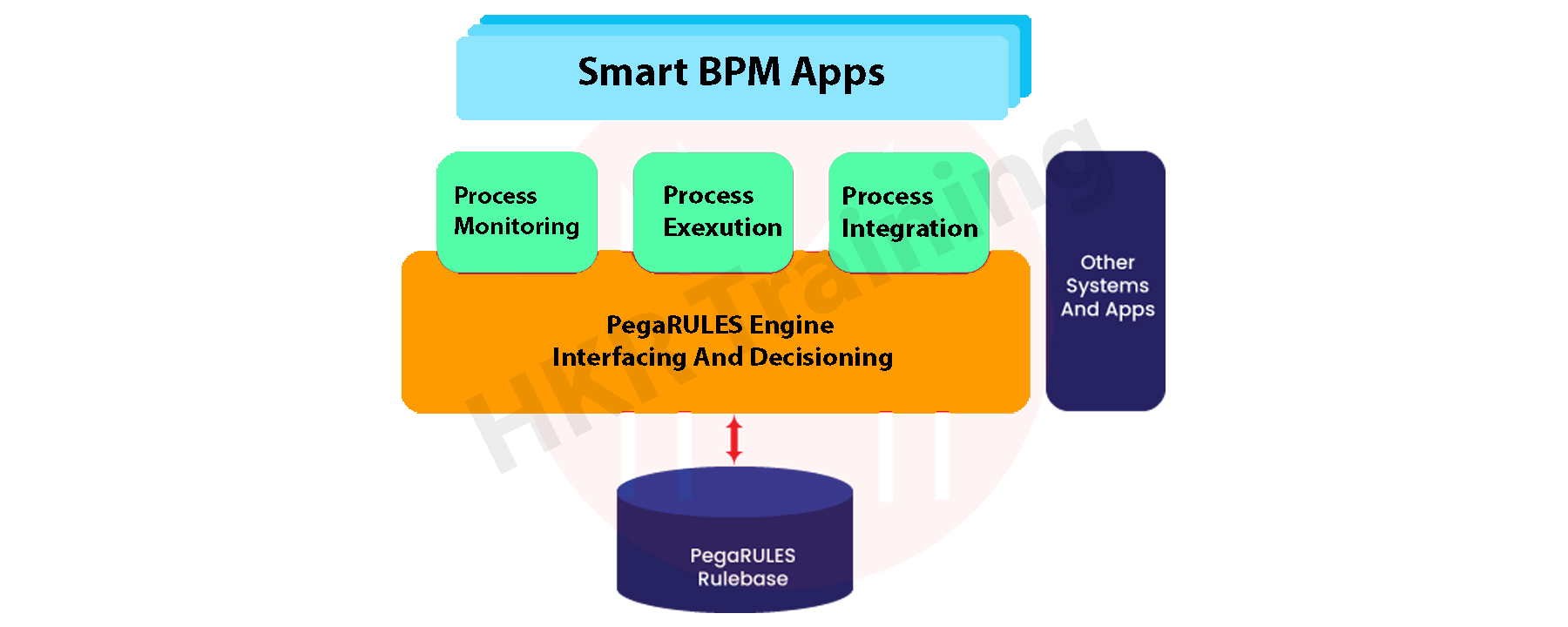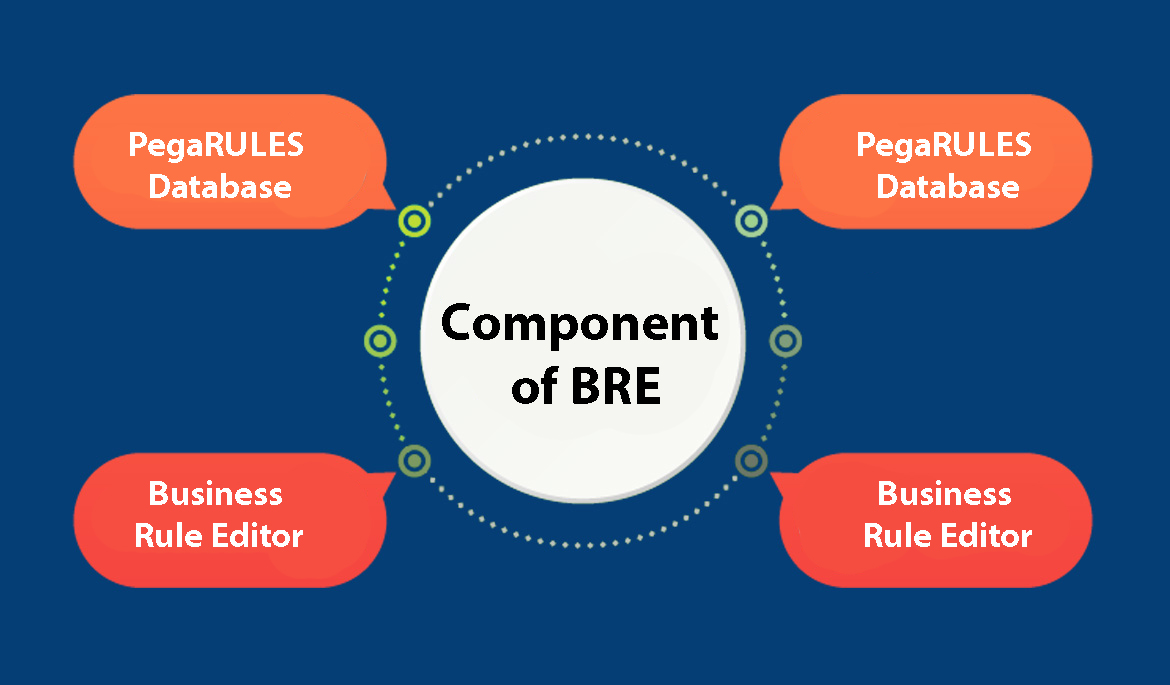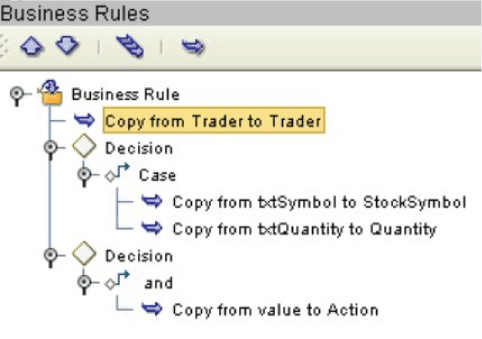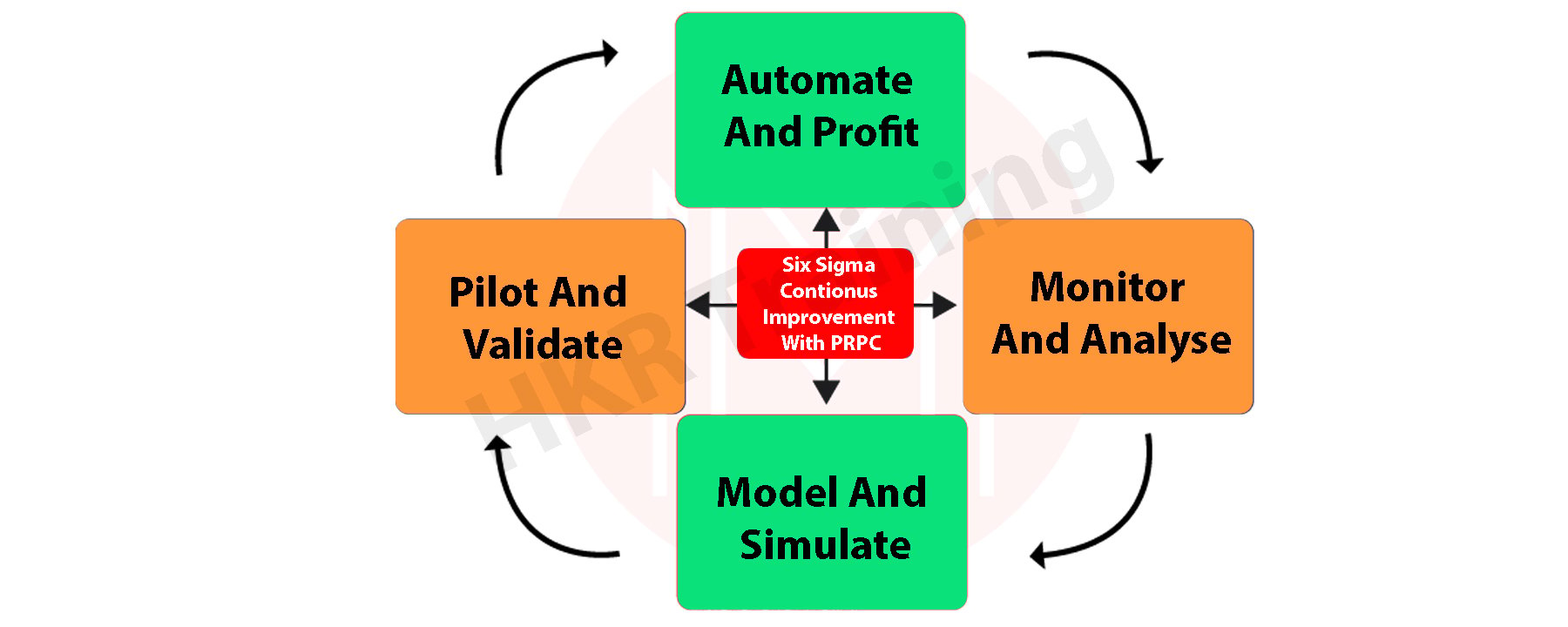What is Pega?
Pega is a leading provider of process automation software that is well renowned for its low code process automation. Pega's best feature is that it was "designed for change." It implies that the automation software can alter company procedures to reflect situational changes. For this reason, Pega is considered as one of the pioneers of process automation. Pega enables rapid software application development and provides a positive end-to-end customer experience. Additionally, it offers all kinds of enterprises the best options for case management, content management, and resource security.
Why Pega?
Pega's product is built on JAVA and generates JAVA code that is executed at runtime.
Pega's goal is to "eliminate coding" and "automate manual work" to the greatest extent possible, and to build complex enterprise-level systems with features.The fundamental idea of PREGA PRPC revolves around the fact that software changes are unavoidable over time.The goal of PegaPRPC's work is to reduce the costs associated with those changes.PEGA's product tagline, "Build for Change," explains how it fits into this scenario.
Pega makes it easier to create and manage web-based apps. The connectivity with Oracle Databases and other external systems is one of the many features included into Pega that make up a web-based application. Even the industry's top software configuration management solution is incorporated into Pega. When compared to Java, application development in Pega requires only one-third the effort.
Want to Become a Master in Pega? Then visit here to Learn Pega Training
Pega PRPC
Pegasystems Inc (PEGA) generated, established, and advertised the PEGA PRPC licensed software product (Pega RULES Process Commander).PRPC is the foundation of Pegasystems. It is entirely model-driven, allowing for the development of reliable and efficient applications that do not require any code such as SQL, Java, CSS, or HTML.
- Pega PRPC is comprised of two distinct entities,
- Process Commander: Sets of pre-configured rules that serve as a foundation for customization and development.
- PEGA Rules is made up of a Java-based Object-Oriented Rules Engine.
- PRPC merely identifies complex business problems by incorporating both of the following segments:BPM: It adheres to the grinding process within a user-interactive BPM or BPMS (BPM Suite) tool.
- Declaratory "On-Change" processing within an event-driven tool is referred to as BRE.
PRPC is a software platform that allows businesses to consolidate all of their various, distinct, and complex business practices and methods into a single platform.It provides the option of automating, documenting, and streamlining business methods in order to consolidate multi-stream processing into a single system.
Pega PRPC Architecture
The core PRPC is a type of Java engine which dynamically gathers caches and runs Java classes. This tool is largely utilised in finance, healthcare, and the banking industry. A pre-built framework with a process monitoring application is offered by this tool. The following are the primary services provided by the PRPC architecture.
- Management of cases:A case involves a collection of structured as well as unstructured processes. All these cases may vary depending on the workplace. For instance, there are numerous procedures involved in creating a bank account, including KYC (Know Your Customer), legality, credit checks, etc. Additionally, by creating a case, it is simpler to keep track of each of these cases. The case is closed once the procedure is finished.

- Management Services: This service is connected to BAM (Business Activity Monitoring) and BPA (Business Process Analysis). Every business provides these management services for a variety of operations.
- Business Process Management Services: Several things are referred to by this service. The PRPC is also employ
- Business Rule Service: The Business Rules Engine provided by Pega PRPC allows users to create unique rules. In addition, these are used for executing, monitoring, and integrating processes.
- Presentation Service: This service is helpful for displaying different activities. Additionally, it can provide user interfaces for any browser, email sending, and other features that are present in the users' or client's internet portal.
The stated services assist the user in a variety of ways to achieve ideal results from their activity. Business analysts can use technology more effectively to plan out and execute business activities. This effectively distinguishes the company in the marketplace.
PRPC initiates various processes using programmed events, declarative events as well as automation-supported unit tests. It can be SOA-optimized and can use several transports to consume services, including HTML, REST, SOAP, and others. It integrates seamlessly into a variety of enterprise application architectures. Additionally, PRPC provides a variety of UI components.
It also offers a model-driven method for developing applications. Technology and business both gain from this strategy. It offers a platform based on technology and open standards. It results in the adaptability and effectiveness that accompany modern technological standards.
PRPC prerequisites
The Pega PRPC learner should have basic knowledge of XML and HTML, as well as an understanding of logic and some knowledge of technologies such as Java or C++.As a result, the product's class composition and legacy.
Related Article: SLA in Pega

Pega Certification Training
- Master Your Craft
- Lifetime LMS & Faculty Access
- 24/7 online expert support
- Real-world & Project Based Learning
Using PEGA PRPC
The following are the business benefits that PRPC strives for:
- The PRPC platform enables businesses to consolidate all of their disparate, distinct, and multiple business methods and rules into a single platform.
- It provides the ability to automate, document, and streamline business processes.
- Combine multi-stream methods into a single system.
- Transfer data between frameworks and have it parsed, separated, and deciphered.
- The goal of PEGA PRPC is to reduce the costs associated with any changes.
Want to know more about Pega,visit here Pega Tutorial !
Pega PRPC developer:
Pega Developers are extremely competent software programmers who create and implement enterprise-level applications on the Pega PRPC platform. Pega is a Java-based unified Business Process Management (BPM) system that employs OOP concepts. The system enables firms to gain digital process automation while also improving customer experience.
Pega BPM:
BPM is a methodology for implementing methods and workflows in a business. The goal of BPM methodology is to increase output and capability in day-to-day business operations.
BPM is a structural approach to managing and continuously optimizing organizational activities and processes that employs methods, policies, metrics, and software tools.

Subscribe to our YouTube channel to get new updates..!
Advantages of pega BPM
The following are the advantages of the Pega BPM. They are:
- With pega one can have smarter, quicker, and less expensive
- Rapidly adjust to different in enterprise applications
- Lower the quantity of errors, replication, and financial risk by processing critical business activities with quality.
- It drastically reduces IT costs while increasing productivity
- Pega helps in Increasing the organizational security.
Pega PRPC developer Job Description:
Users will be in charge of the implementation of large-scale Pega projects in this role. This could include creating BPM applications, integrating web services, creating data models and frameworks, and compiling business analysis requirements.
You should really have extensive knowledge of the Pega Class Hierarchy, encounter with Java-based applications, and high-level project management skills to be successful as a Pega Developer. A top-tier Pega developer understands the company's requirements and creates scalable approaches to enhance process management.
Top 40 frequently asked Pega Interview Questions !
Pega PRPC Developer Responsibilities:
Convening with company leaders to understand the needs of the company's BPM applications.
- Pega BPM application design and development
- Within the Pega PRPC environment, performing solution architecture.
- Class structures, application frameworks, and data models are all designed.
- Working with the project team to ensure that the business architecture meets the needs of the customer.
- Business databases, legacy systems, and web services are all being integrated.
- Rebooting application problems, coding errors, and bottlenecks
- Overall system tests are being carried out.
- Keeping the security of all system applications intact.
Pega PRPC Developer Requirements:
The following are the requirements of the PEga PRPC developer. They are:
- A bachelor's degree in either software engineering or computer science is required.
- Demonstrated work experience as a Pega Developer.
- Advanced understanding of Pega PRPC 5.x/6.x/7.x.
- Knowledge of J2EE, XML, Java, JSP, and EJB.
- Knowledge of Scrum and Agile methodologies.
- Knowledge of programming languages such as AngularJS, Java, and JQuery is required.
- Understanding of web technologies such as JavaScript, CSS, HTML5, and XML.
- Outstanding project management abilities.
- Capability to troubleshoot complex software problems.
Future of Pega Developer:
PEGA is helpful in the design of software for BPM (Business Process Management) and CRM (Customer Relationship Management) (Customer Relationship Management). PEGA is used by many huge companies in various industries, as well as local firms, to enhance their products and services. AI technology and the business innovation of implementations are two of the trends in PEGA.
What are Business Rules in PRPC?

Business rules, which encompass an organization's policies, procedures, and practices, are usually considered as the brain of a business. Business rules may also include business constraints, policies, and reasoning skills. Business rules basically encompass all of an organization's knowledge. In other words, business rules serve as limits and decisions that reflect a company's objectives. Business rules primarily assist in removing inefficiencies from business processes.
Recognize that defining business rules is important for businesses because it primarily determines the final result of a business. Business logic, which is nothing more than a series of operations created based on business rules, is another crucial element related to business rules. They help extract the best outcomes while monitoring, integrating and executing business processes.
What are the Components of BRE?
Following are the components of BRE:
PegaRULES Database: All the business rules, system data, and associated transactions are stored in this database. The mapping of database tables to the PegaRULES database is depicted in the following image.

Business Rule Editor:
It serves as the user interface for users to define, update, and record business rules. You can delete rules as well as a set of rules, rearrange rules and change rule’s destination using the business rule editor. A business rule editor allows you to see the structure of the rules and how they will be applied.

Reporting Component: An interface enables users to query and report on the current business rules.
Rule Engine Execution Core: The business rules are carried out by the Programming code.
Types of Caches in PRP
PRPC provides a number of Caches. They are listed as follows:
- Declarative pages: Declarative pages at the node level can be found here. They also contain a number of different property rules and are produced by declare page rules.
- Extracted static files from rule file: Every rule instance’s object is extracted to the file and is served by a web server.
- Rules Assembly Cache: PRPC provides a number of caches. Different activities and many more rules can be saved in Separate caches. Additionally developers can use the assembly cache rules to translate this to Java Code.
- Rule Cache: It automatically caches numerous rules to enhance speed. These rules are continuously accessible to developers, who can use them to produce the desired outcomes. Additionally, several rule types exist for access roles, users, security, data, dara models, teams, processes, cases, etc.
Pega PRPC and Six Sigma:
The Six Sigma methodology is used to identify important business processes and enhance process performance until quality objectives are satisfied. The fact that Six Sigma promotes continuous process improvement in business operations is its most important feature.

When Pega PRPC is integrated with the Six Sigma Techniques, business processes are optimized rapidly according to the situational changes. The optimum use of this integrated strategy is for ad-hoc tasks where real-time process modification is required. Additionally, it enhances the definition and execution of rules, situation selection, process monitoring, event correlation, and specialization.
Visit here to learn Pega Training In Hyderabad
Conclusion
PEGA allows designers to easily create a wide range of applications, such as business processes that are implemented as web services, CRM solutions, developing user interfaces, and so on. PEGA provides versatility in continuous innovation as well as engaged multi-channel customers. Because of its reusability, it is dependable and accurate.A PEGA developer's scope is very broad. These designers are in high demand today, as they are employed by many of the world's largest technology companies.
Related Articles:
About Author
Kavya works for HKR Trainings institute as a technical writer with diverse experience in many kinds of technology-related content development. She holds a graduate education in the Computer science and Engineering stream. She has cultivated strong technical skills from reading tech blogs and also doing a lot of research related to content. She manages to write great content in many fields like Programming & Frameworks, Enterprise Integration, Web Development, SAP, and Business Process Management (BPM). Connect her on LinkedIn and Twitter.
Upcoming Pega Certification Training Online classes
| Batch starts on 28th Dec 2025 |
|
||
| Batch starts on 1st Jan 2026 |
|
||
| Batch starts on 5th Jan 2026 |
|
FAQ's
Pega PRPC refers to Pega RULES Process Commander, simplifies the business process, and automates their optimization based on business rules. Also, it is the core part of Pega BPM and offers complete solutions that help improve various business processes.
There are multiple benefits of Pega PRPC, such as:-
- It quickly transforms according to the changes in the business.
- It uses many service connectors like SOAP to connect smoothly with other external apps.
- Moreover, it simplifies various business processes and minimizes faults and data redundancy.
Pega PRPC helps to automate business processes by optimizing them. Also, it is the core part of Pega, and PRPC manages everything within it. On the other hand, Pega BPM is a business process management tool that helps to build various business apps. Further, it helps to get faster results and provides better customer experiences.
Pega is a BPM tool valuable for many businesses where the BPM technology simplifies and automates business operations.
Pega Developers have good demand in the existing market with low-code development capabilities. A certified Pega Developer earns, on average, Rs. 6.58 lakhs per annum. This scale may go higher with the growing experience level.

